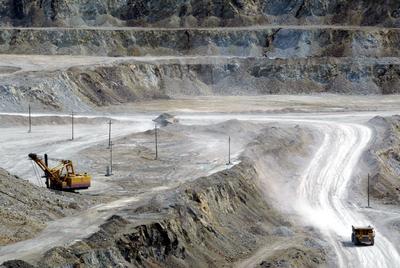The Civil Will–Green Party won two seats and independent candidates won three seats.
The 2012 election was epoch-making in many ways for Mongolia, which recently implemented new election laws. For the first time in its history, Mongolia used an electronic voting system to avoid the fraud that had previously occurred during the manual counting process. These measures were meant to achieve an efficient and fair election, but technical problems defeated the hopes of efficiency. The Mongolian People’s Party and eight other small parties petitioned to recount the votes manually, insisting that the traditional system of manual counting would be more accurate. The request seems to stem from their dissatisfaction about the electoral success of the Democratic Party, which had protested against the 2008 parliamentary election results, sparking a riot that caused five deaths. The 2008 riots came as a shock to Mongolians and damaged its image as a country that made a smooth transition to democracy. Mongolian leaders seem to have learned the lesson and are cautious not to repeat the mistakes of 2008 because with investors around the world closely watching Mongolia’s political stability, the country’s economic future is at stake.
In addition to introducing a new election system (a combination of the majority and proportional system of voting) that benefits smaller parties, the new election law also permitted Mongolian citizens living overseas to vote, and introduced a quota system to ensure that no less than 20 per cent of the candidates are women.
From the 35,000 expected overseas voters, fewer than 3000 actually lodged their vote. The overseas voting method may have caused this meagre result: because no postal voting was allowed, voters had to appear at the Mongolian diplomatic posts, and so voters were mainly restricted to the places where Mongolian embassies happened to be located.
Meanwhile, the proportion of female candidates was nearly 32 per cent, well above the quota. At least 10 of them were elected, and 2 are still yet to be confirmed. These figures show a significant step forward and bring up the proportion of female legislators from less than 4 per cent to about 13–16 per cent — an historical high. The main reason for the increase was not the quota system but the increasing disillusionment with the male-dominated corrupt leadership and the perception that female leaders were less corrupt and more principled. Despite unfavourable listing on party ballot lists, four women won the election through the proportional system, which suggests that voters made conscientious candidate choices.
This election is also important for the future of Mongolia socially and economically. While the mining boom is bringing great wealth to the country, it is also creating social inequalities. The wealth is not distributed evenly across the country, but remaining with the small number of people who hold power. The sudden shift from a closed and planned socialist economy to a free market economy occurred without a transparent system of government, and the potential wealth from resources has accelerated corruption in the country. Thus, those with money have become powerful and those with power have accumulated more wealth. The poor have become even poorer because there was no adequate welfare system to look after them after the collapse of the communist system. The presence of foreign mining companies creates another layer of inequality, because local employees are paid less than their foreign (Western) peers for the same job. Mongolian people also consider it unfair that foreign companies own so much of the strategically important copper and gold mine, Oyu Tolgoi, and feel threatened by the possibility that Mongolia might lose its resources to foreign companies, especially to China.
These issues were on the minds of voters on 28 June. The participation rate was at an historical low of 65 per cent. While this shows people’s cynicism about party politics, there is hope that these inequalities will be reversed by having less corrupt leaders. The election campaigns reflected these concerns and the parties variously promised to spread the wealth nationwide and bring about a better quality of life.
The new government will face many social and economic challenges, including distributing wealth equitably across the nation, and using the revenue gained from the mining sector to build a sustainable welfare system, infrastructure and education. Developing the mining industry while promoting the Mongolian traditional pastoral economy and tourism will also be an important issue in years to come. Stamping out corruption and creating a transparent government are crucial to building the sustainable democracy that will maintain Mongolia’s reputation in the world amid growing resource nationalism and the growing economic and political influence of its two neighbours.
Li Narangoa is Professor at the College of Asia and the Pacific, the Australian National University.

